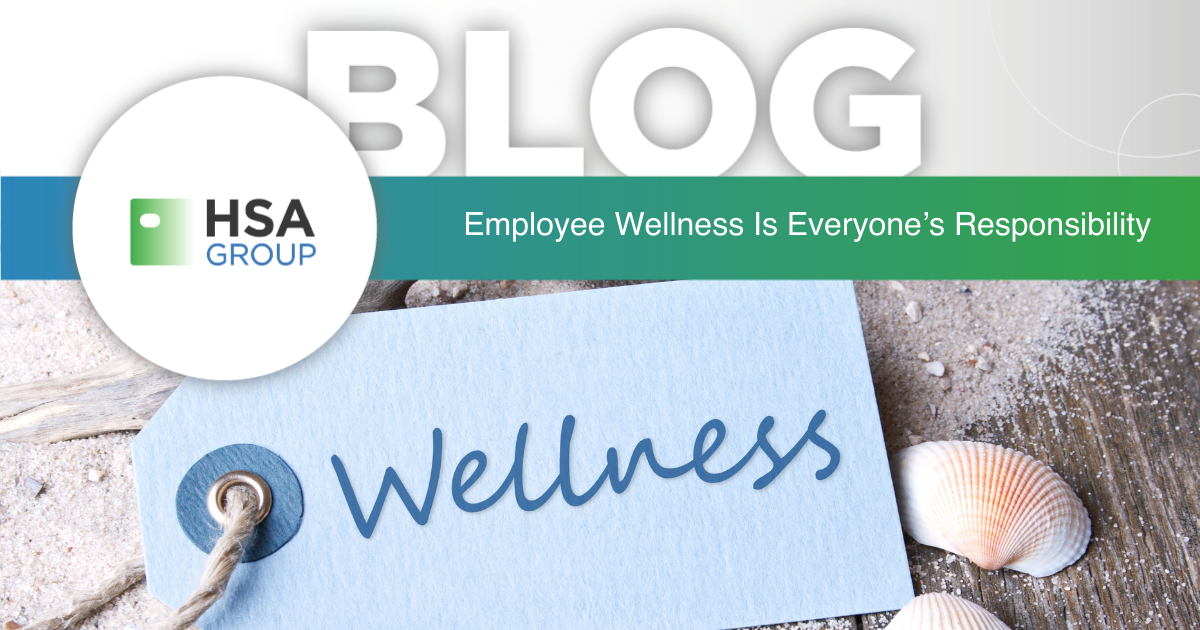Should your employee should bear the brunt of the responsibility for their own employee wellness? Perhaps. But it is clear that wellness in the workplace needs to strike a balance between employer and employee. It benefits everyone. It is all too common for people to mask the symptoms of burnout, so much so that even they do not realize they’re headed down a slippery slope. In its initial stages, the chronic stress that fuels burnout can feel exhilarating in the same way that working against a deadline motivates some people. But on-going, low-grade stress and anxiety is detrimental overall. If your employees lack the resources to deal with the pressure and demands, it will lead to eventual burnout.
Along with offering an employee wellness program, it is important to create a company culture that discourages employees from burning the candle at both ends. Read on for four ways for employers to get started down a path towards a workplace that embraces employee wellness at its core.
1. Find Ways to Stay Well
Why do the most straightforward health and wellness solutions continue to be the ones most people still struggle with? Eating right, sleeping well, and exercising are the holy trinity of living a healthy life. Ever notice how a great night’s sleep, a killer workout, or a couple of days of seriously healthy eating make you feel like you can accomplish anything? That is no fluke.
All three elements have a major impact on people’s energy, brainpower, moods, and more. A fabulous trickle-down benefit of any of these three health solutions is that they have a cyclical impact on your health. It has been shown that improvements in sleep promotes the individual to make strides in their diet and activities. Similarly, diet improves lead to desires to improve sleep and activity habits. And improvements in exercise and healthy activities lead to a better chance of improvements in diet and sleep hygiene.
Employee Wellness Employer Tip: Create a workplace that makes healthy choices easy for employees. Do all your employees need to work the same hours? Perhaps flex time for some of your team might make them more productive and healthier with an 11-7 shift instead of 9-5. Does your business offer WSAs so your team can purchase gym memberships and/or athletic equipment? And you can make small improvements in the workplace when it comes to food. Add some healthy choices in your vending machines and consider initiating a fresh fruit program.
2. Encourage Employees to Take a Break
One of the biggest factors in preventing burnout is to take time to relax and recharge. In Alberta, the basic rules for breaks are as follows (visit alberta.ca for full details):
- Maximum of 12-hours a day unless an exception occurs
- One 30-minute paid or unpaid break after the first 5 hours of work for shifts that are between 5 and 10 hours
- For shifts 10+ hours, entitled to two 30-minute breaks
- Not entitled to any breaks if their shift is 5 hours or less
- Break may be taken in 2 periods of at least 15 minutes
- At least one day of rest each work week.
Again, these are the basic minimum rules. Each employer can afford additional break benefits as they see fit. Similarly, an employer can provide any additional vacation pay over the minimum they choose to. However, a workplace study found up to 52% of employees are not fully utilizing their allotted vacation days with 41% indicating they felt shame for taking their allotted days. Downtime is critical. Burnout happens so easily and can be so easily avoided.
Employee Wellness Employer Tip: Encourage employees to recharge their batteries with a few days away from work or a longer vacation when possible. They are provided with an annual allotment of vacation days. They should use them. It helps their mental and physical health. In addition, it alleviates liability in both the risk sense (such as fatigue-based accidents) and the financial sense (since these days are an as-yet unpaid expense) for your business.
Employees should also be encouraged to use their daily breaks to eat, get in a workout, or simply walk away from their machines or screens.
3. Focus (Un)Interrupted
Your employees are going a million miles a minute in their workplace and at home. A sense of overwhelming and distraction inches them ever closer to burnout. Many people aim to tackle everything on their to-do list by multitasking, but this strategy’s causing a productivity nightmare.
A recent study by the American Psychology Association indicated that “multitasking may actually be less efficient…because it takes extra time to shift mental gears every time a person switches between the two tasks.” People on average switch tasks every 3-5 minutes and it takes them about 23 minutes to get back on task. This means employees, meaning multitasking is barring employees’ ability to deeply engage and make progress on what they are tasked to do
Employee Wellness Employer Tip: Employees should be encouraged to focus on one task through to completion rather than juggling multiple priorities simultaneously. Training for soft skills like time management can also help. Employers should monitor employees’ workloads to ensure productivity and employee wellness are both in balance. Many businesses fall in the trap of too many meetings. Scrutinize your meeting regularity and engage in smart meetings that are structured, have a focused agenda and strict timelines. Turn off notifications.
4. Strike a Balance to Foster Employee Wellness
The tools available today make working easier than ever before, but they also mean employees are tethered to their devices and never truly away from work. In fact, 37% of employees spend more than ten non-work hours each week completing work-related tasks.
This 24/7 accessibility has a serious impact on employees’ personal lives, making it feel impossible to ever unplug from the office truly. And in contrast, equally difficult to leave home at home when working. No one’s suggesting giving up devices, but it’s important for people to step away from them to decompress and spend valuable facetime with family and friends.
Employee Wellness Employer Tip: Set home-life boundaries with pre-determined exceptions. This means that barring any emergency situations (and industries where this is not possible), employees should not need to respond (or even read) work emails outside of work time. And in return, employees should honour the intent that personal devices and messages will be read/responded to during break time. Both you as an employer and your employees should be of like mind. Ensure they participate in setting the ground rules.
Your Health and Wellness Insights
You and your employees are both responsible for employee wellness in the workplace. If you are looking for additional information on how including a WSA into your benefits total compensation bundle, contact us today.




